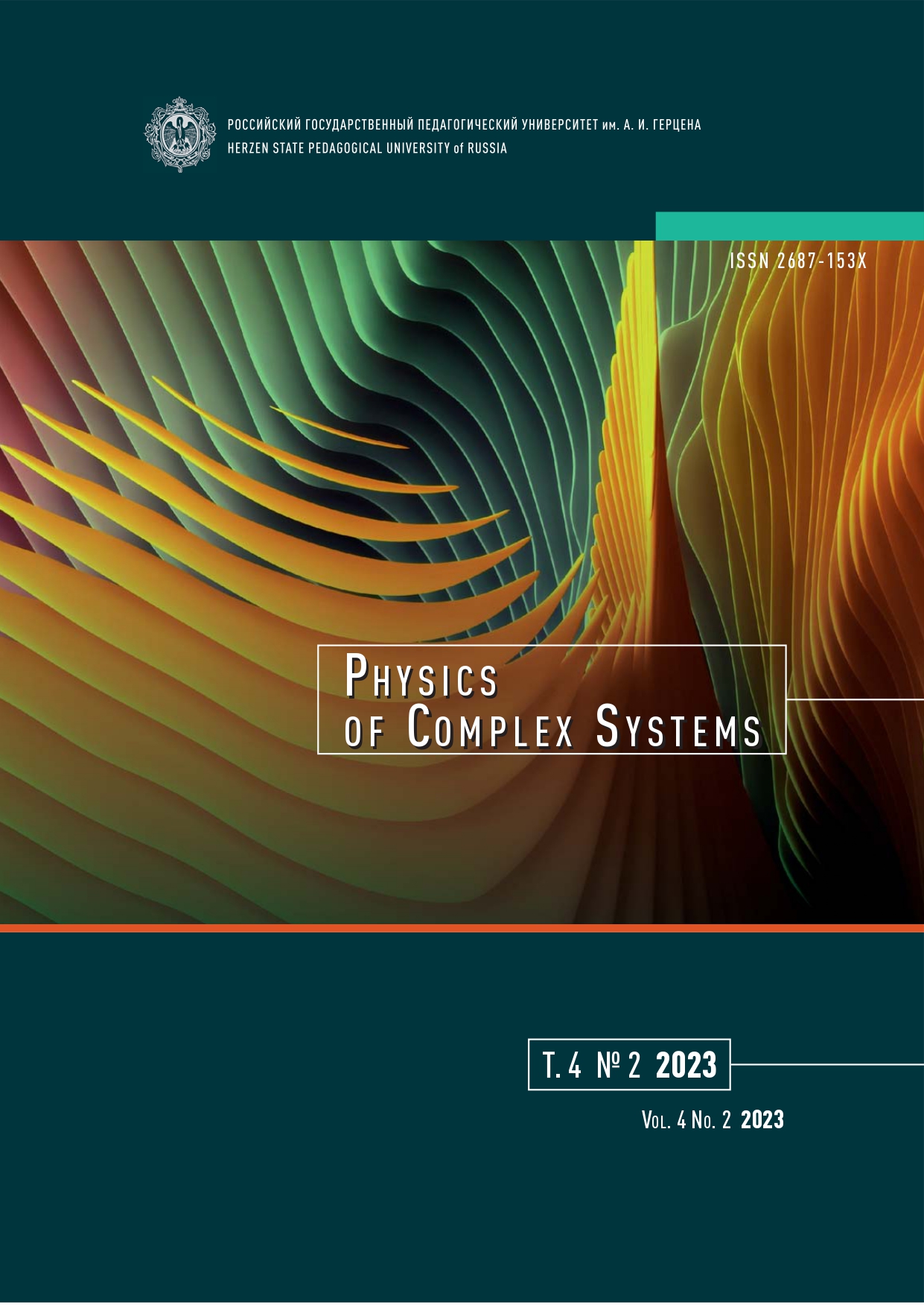Electric transport in thin modified films of selenide and sulfide of arsenic
DOI:
https://doi.org/10.33910/2687-153X-2023-4-2-68-74Keywords:
modification, conductivity, activation energy, chalcogenide glassy semiconductor, single pair of electronsAbstract
In the studied ChGS the effect of modification influence on the nature of the temperature dependence of conductivity was found. The value of the latter increases with a decrease in the band gap and, accordingly, with an increase of the activation energy. This energy correlates with the change in the height of the potential barrier at the contact between the metal and the chalcogenide glassy semiconductor for different compositions of As2Se3 and As2S3 materials. The significant role of a single pair of electrons belonging to the atoms of the modifying impurity is noted. The pair of electrons is responsible for the realization of disordered and defective structure and for the formation of the energy system of local states that affect the process of charge carrier transfer.
References
Chaudhary, S., Modgil, V., Rangra, V. S. (2020) Effect of compositional variation on physical parameters of quaternary chalcogenide glasses Se69Sn10Ge21-xSbx (6 ≤ x ≤ 14). Journal of Ovonic Research, 16 (1), 41–52. (In English)
Chirita, A., Prilepov, V. (2022) Chalcogenide glassy semiconductors of the system As-Se-S-Sn for X-ray imaging. Chalcogenide Letters, 19 (6), 439–445. (In English)
Chu, J., Sher, A. (2007) Physics and properties of narrow gap semiconductors. New York: Springer Publ., 606 p. https://doi.org/10.1007/978-0-387-74801-6 (In English)
Ghayebloo, M., Tavoosi, M., Rezvani, M. (2017) Compositional modification of Se-Ge-Sb chalcogenide glasses by addition of arsenic element. Infrared Physics & Technology, 83, 62–67. https://doi.org/10.1016/j.infrared.2017.04.010 (In English)
Gubanov, A. I. (1963) Kvantovo-elektronnaya teoriya amorfnykh provodnikov [Quantum-electronic theory of amorphous conductors]. Moscow; Leningrad: USSR Academy of Sciences Publ., 250 p. (In Russian)
Kazakova, L. P., Lebedev, E. A. (1998) Effect of metal impurities on the drift mobility of charge carriers in glassy chalcogenide semiconductors. Semiconductors, 32 (7), 714–715. https://doi.org/10.1134/1.1187490 (In English)
Kolomiets, B. T., Averianov, V. L., Lyubin, V. M., Prikhodko, O. J. (1982) Modification of vitreous As2Se3. Solar Energy Materials, 8 (1-3), 1–8. (In English)
Mehta, N. (2006) Applications of chalcogenide glasses in electronics and optoelectronics: A review. Journal of Scientific and Industrial Research, 65 (10), 777–786. (In English)
Moynihan, C. T., Gavin, D. L., Syed, R. (1982) Pre-exponential term in the Arrhenius equation for electrical conductivity of glass. Journal de Physique Colloques, 43 (C9), C9-395–C9-398. https://doi.org/10.1051/jphyscol:1982975 (In English)
Nardone, M., Simon, M., Karpov, I. V., Karpov, V. G. (2012) Electrical conduction in chalcogenide glasses of phase change memory. Journal of Applied Physics, 112 (7), article 071101. https://doi.org/10.1063/1.4738746 (In English)
Nguyen, H. T., Yakubov, A. O., Lazarenkо, P. I. et al (2018) Characteristics of amorphous As2S3 semiconductor films obtained via spin coating. Semiconductors, 52 (15), 1963–1968. https://doi.org/10.1134/S1063782618150058 (In English)
Zhang, X. G., Pantelides, S. T. (2012) Theory of space charge limited currents. Physical Review Letters, 108 (26), article 266602. https://doi.org/10.1103/PhysRevLett.108.266602 (In English)
Downloads
Published
Issue
Section
License
Copyright (c) 2023 Vachagan T. Avanesyan

This work is licensed under a Creative Commons Attribution-NonCommercial 4.0 International License.
The work is provided under the terms of the Public Offer and of Creative Commons public license Creative Commons Attribution 4.0 International (CC BY 4.0).
This license permits an unlimited number of users to copy and redistribute the material in any medium or format, and to remix, transform, and build upon the material for any purpose, including commercial use.
This license retains copyright for the authors but allows others to freely distribute, use, and adapt the work, on the mandatory condition that appropriate credit is given. Users must provide a correct link to the original publication in our journal, cite the authors' names, and indicate if any changes were made.
Copyright remains with the authors. The CC BY 4.0 license does not transfer rights to third parties but rather grants users prior permission for use, provided the attribution condition is met. Any use of the work will be governed by the terms of this license.







